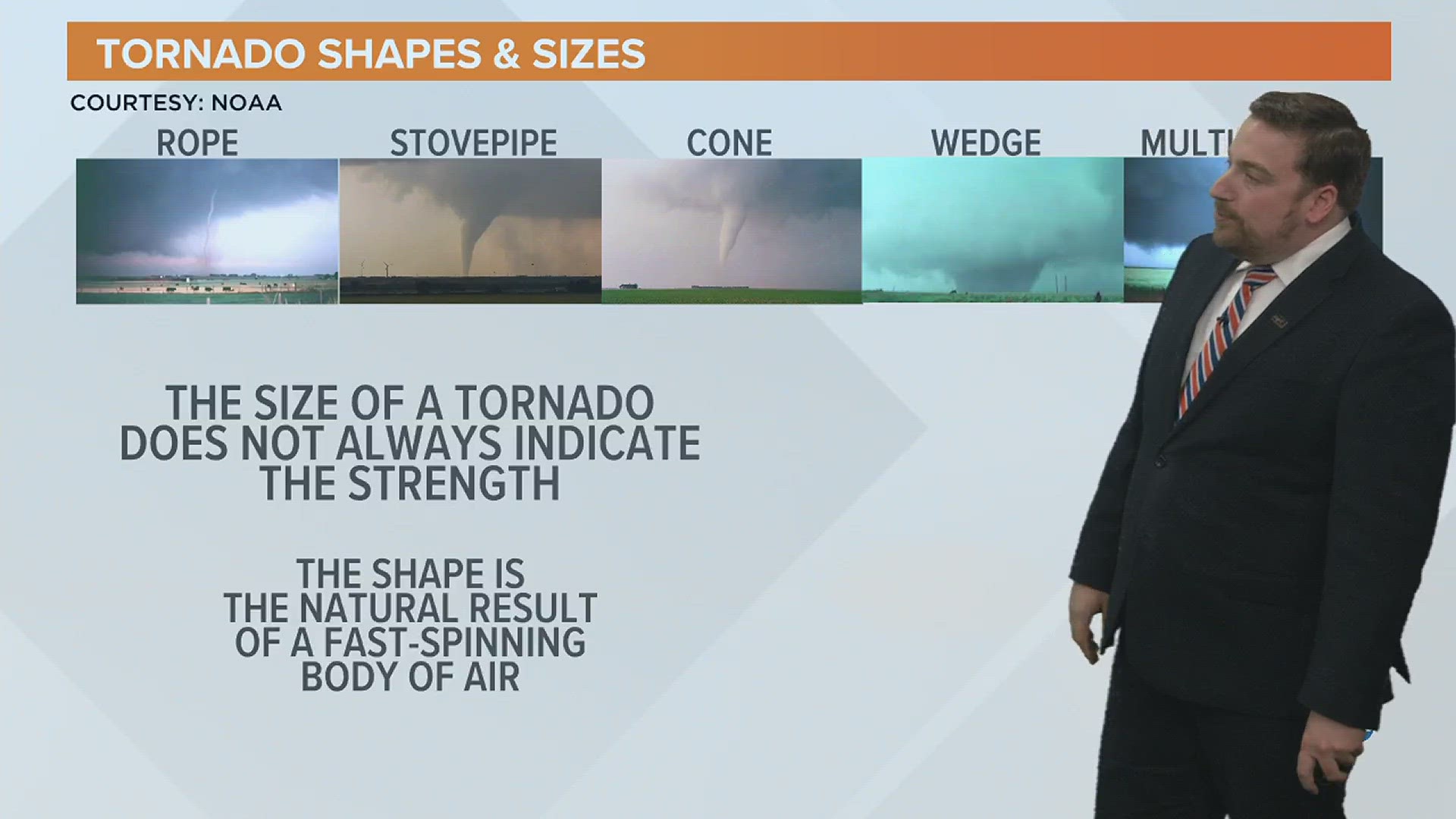MOLINE, Ill. — Does size really matter when it comes to the strength of a tornado? With our recent bout of severe weather still on many minds across the Quad Cities, today's Ask Andrew question is quite timely! Let's dig in.
We're all familiar with the Enhanced Fujita Scale when it comes to measuring the strength of a tornado, but, did you also know that there are at least five different kinds of tornadoes when it comes to their physical shape and appearance?
Different processes can greatly impact the appearance of a particular tornado, including the strength of wind shear, or change in wind direction/speed with height, the height of the base of a wall cloud in relation to the ground, and a few other factors, including terrain.
Because of these varying environments, the five most common tornadoes include the following:
1. Rope

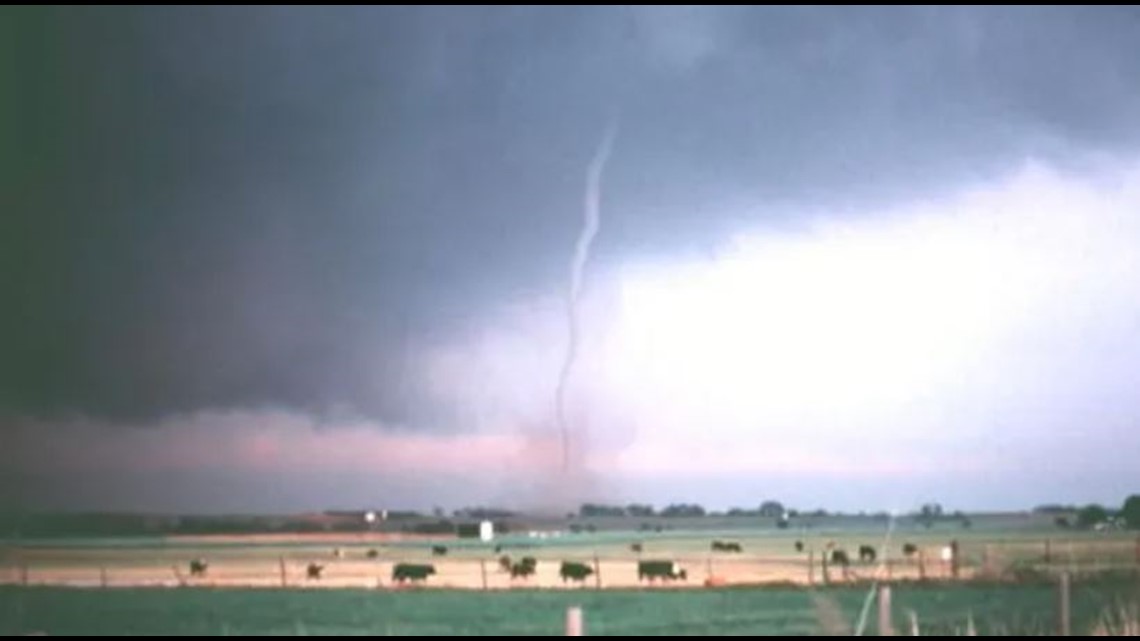
A rope tornado is characterized by its thin appearance, like a rope hanging down from the sky. While it may appear to be small and thin, that doesn't mean the winds associated with it are weak. Very strong winds can become concentrated in a narrow corridor that can still cause significant damage to buildings and homes.
2. & 3. Cone & Stovepipe

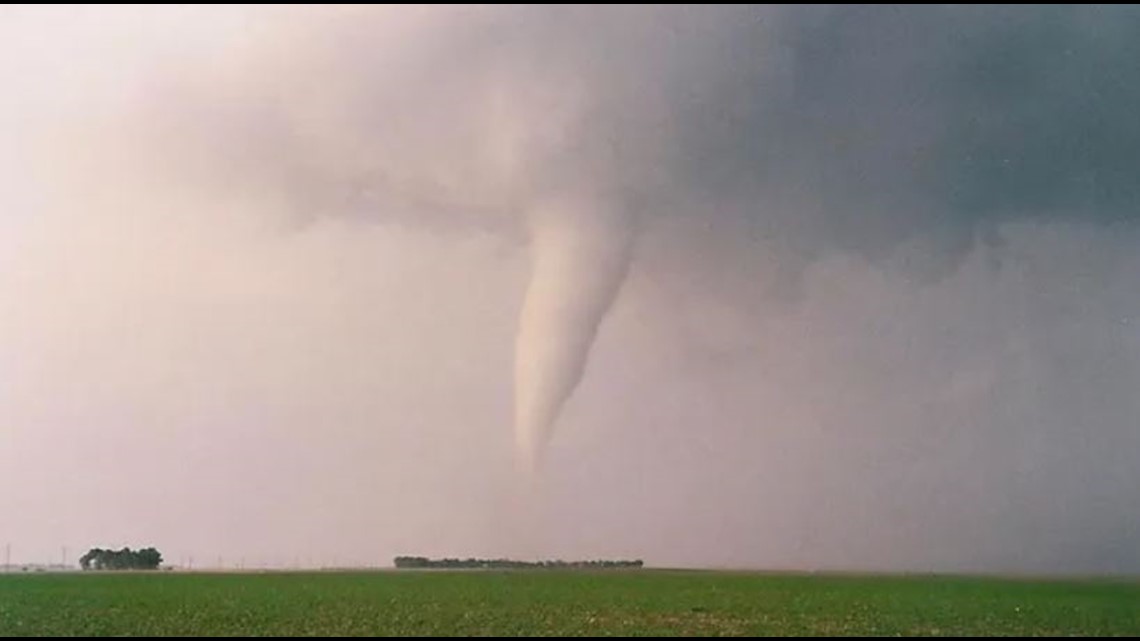
The cone/stovepipe tornado is likely the most common type of tornado that's observed today. This type of tornado is typically more dangerous than a rope tornado given its larger size.

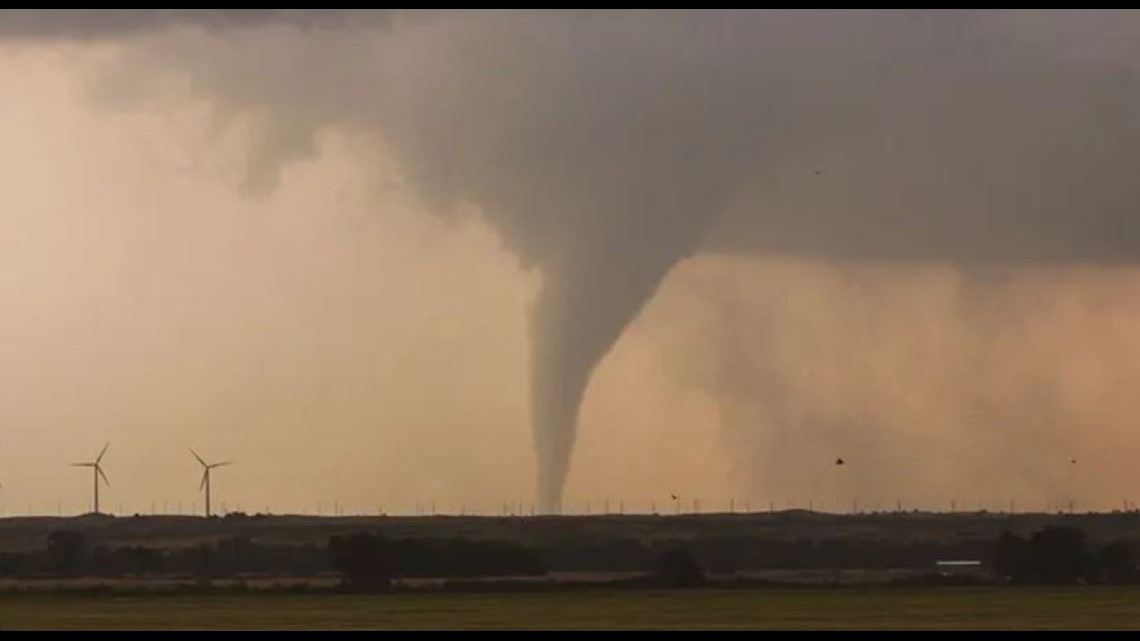
Fun fact, this type of tornado is very visual! The color of the tornado can be correlated to which side you are viewing it from. If you are facing the tornado in the same direction as the sun, it will be a brighter, white appearance. If the sun is on the opposite side of the tornado in relation to your location, it will be a darker, shadowy dark brown color. Also, the debris, including dirt, also plays a role.
4. Wedge
The most intimidating visually speaking, the wedge tornado is infamous for leaving behind a large area of destruction in its path. The name, while not official, is typically used by storm chasers to describe a tornado that appears wider than the distance from the ground to the cloud base.

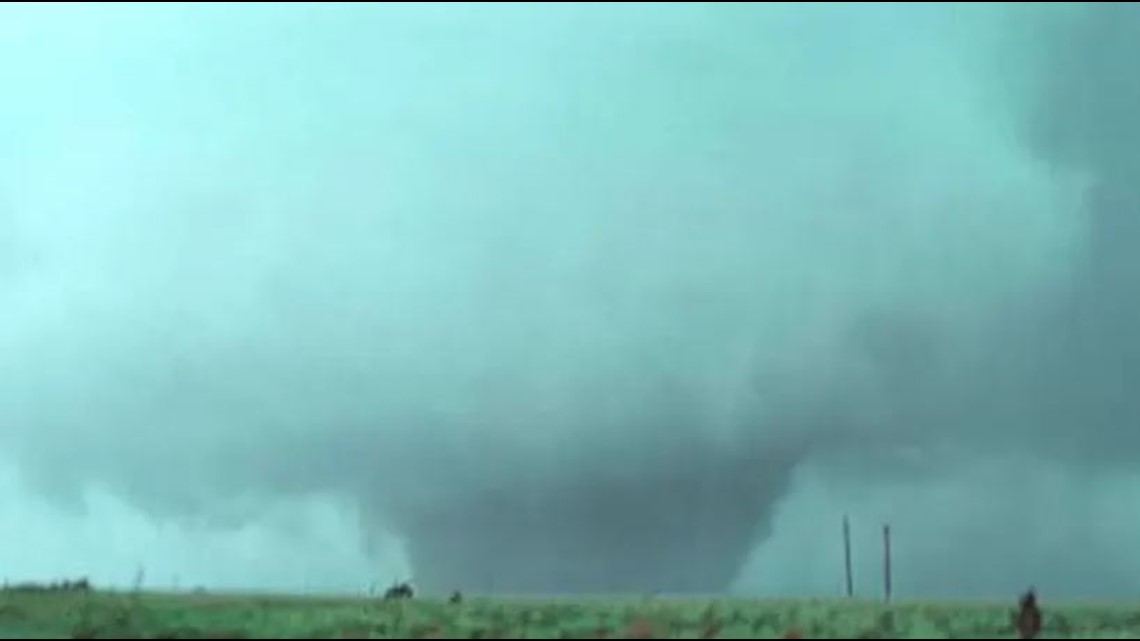
While many associate a wedge tornado with significant damage, including well-known EF-4 and EF-5 tornadoes, not all wedge tornadoes go on to become that strength.
5. Multi-vortex
Some supercells can actually produce multiple tornadoes at the same time, known as a multi-vortex tornado.

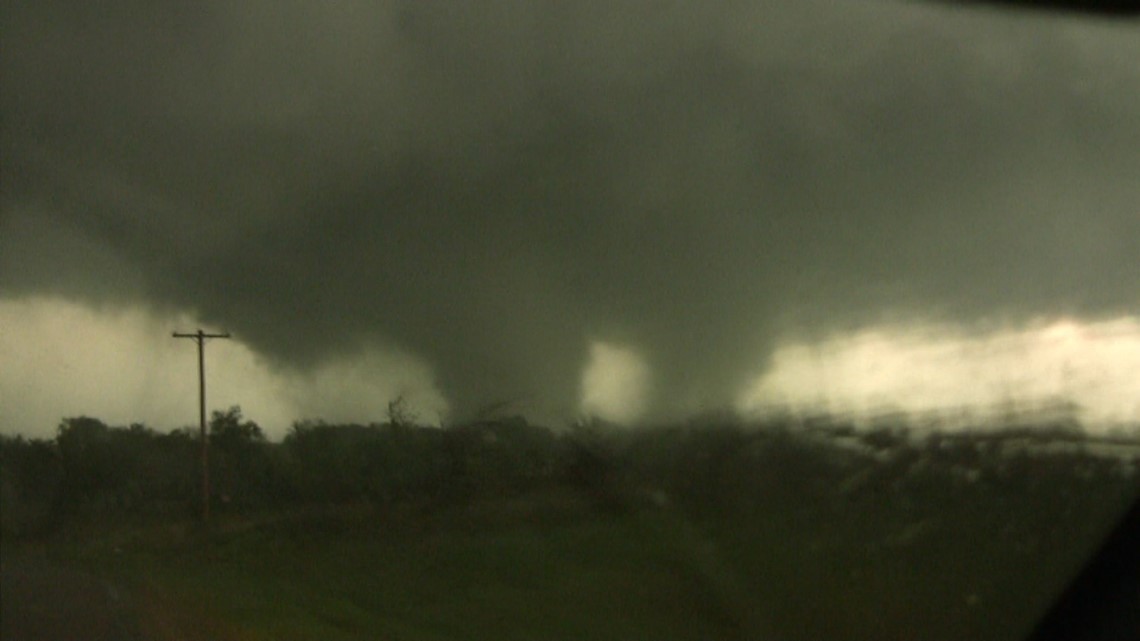
Most multi-vortex tornadoes contain smaller tornadoes rotating around one larger and stronger tornado. These smaller tornadoes pack a punch! They can even enhance speeds up to 100 mph faster than the ground speed of one tornado circulation, causing narrow, extreme amounts of damage.
However, some storms, like the one above, can actually produce multiple tornadoes at the same time. The secondary tornado is referred to as a "satellite tornado". These are extremely rare, but can be very photogenic.
Have a question that you would like me to answer for an upcoming Ask Andrew segment? Submit it, here.

